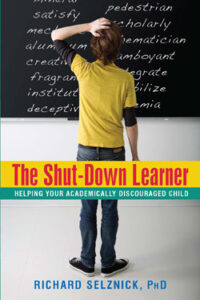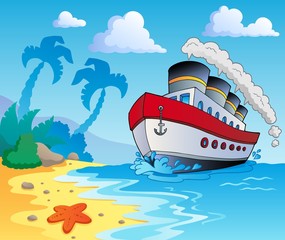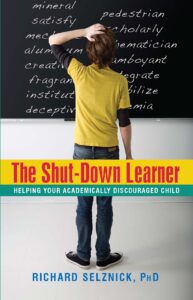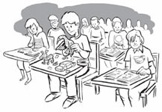“Brief Tip: Getting Clear on Remediation”
 Most children referred for assessments are related to struggles with reading, spelling and writing.
Most children referred for assessments are related to struggles with reading, spelling and writing.
Parents feel a sense of desperation and don’t know what direction to go.
Once the issues are identified, the remediation, unfortunately, can be a bit scattershot. This is embodied in the statement a teacher recently told a mom, “Well, we do a bit of everything…a little comprehension, some decoding, and writing stories. We’ll touch all bases.”
For the struggling children, I prefer a different mindset. Rather than a “touch-all-bases” approach approach, I go in a different direction.
To get clear on the remediation, start with the concept that there are are two fundamental types of reading problems:
- Type I: The child has trouble with reading rate, accuracy and fluency. The bulk of these are what largely fit the definition of dyslexia.
- Type II: These are children who read fluently, but have difficulty understanding what they read. Usually, they have trouble with inferences, interpretation of language and drawing conclusions. Confusion reigns.
For either type, tutoring is a great way to go, but only if the tutor is clear on what the problem is and that they are committed to a laser-focused approach.
Scattershot may work for the children who are not in the Type I or Type II categories, but for the rest, it’s important to get clear.
Know what you are targeting.
To receive future blog posts, register your email: https://shutdownlearner.com.
To Contact Dr. Richard Selznick for advice, consultation or other information, email – rselznick615@gmail.com.
 Copyright, Richard Selznick, Ph.D. 2023, www.shutdownlearner.com.
Copyright, Richard Selznick, Ph.D. 2023, www.shutdownlearner.com.
(***Please note: All blogs represent the opinion and perspective of Dr. Richard Selznick. Comments and questions are welcomed, but are blocked by the hosting site. Please email questions or comments: rselznick615@gmail.com)

 Is your child falling off the Curriculum Ship?
Is your child falling off the Curriculum Ship? wuns a pon a time their was a boy wgo had no frends so he was always alon But than on day evry thing change His mom gave him a voilinto play it sounded horabel so he said I am never playing this again so one Day he went to in the stor and heard the guy play the vialin it sounded awsome so he said to his mom thats how I want to play well then you need to pratis his mom said and then he did and he was so good at it.
wuns a pon a time their was a boy wgo had no frends so he was always alon But than on day evry thing change His mom gave him a voilinto play it sounded horabel so he said I am never playing this again so one Day he went to in the stor and heard the guy play the vialin it sounded awsome so he said to his mom thats how I want to play well then you need to pratis his mom said and then he did and he was so good at it. Started in 2009 upon the release of my first book, The Shut-Down Learner, there have been nearly 600 blog posts completed on a weekly basis over those years..
Started in 2009 upon the release of my first book, The Shut-Down Learner, there have been nearly 600 blog posts completed on a weekly basis over those years.. Last Sunday there was a feature article in the New York Times on the science of reading emphasizing that “science” has confirmed the need to teach children phonics. (
Last Sunday there was a feature article in the New York Times on the science of reading emphasizing that “science” has confirmed the need to teach children phonics. ( In last week’s post, I made the following statement as part of the primer on reading:
In last week’s post, I made the following statement as part of the primer on reading: As we discussed last week (
As we discussed last week ( A book that always stayed with me reminding me of my early days as a psychologist at the Hill Top Preparatory School, a private school in the Philadelphia Suburbs for high schoolers with learning disabilities, is Betty Osman’s, “No One to Play With: The Social Side of Learning Disabilities.” Even though the book came out in the mid 1980’s, it’s as relevant today as it was then.
A book that always stayed with me reminding me of my early days as a psychologist at the Hill Top Preparatory School, a private school in the Philadelphia Suburbs for high schoolers with learning disabilities, is Betty Osman’s, “No One to Play With: The Social Side of Learning Disabilities.” Even though the book came out in the mid 1980’s, it’s as relevant today as it was then.